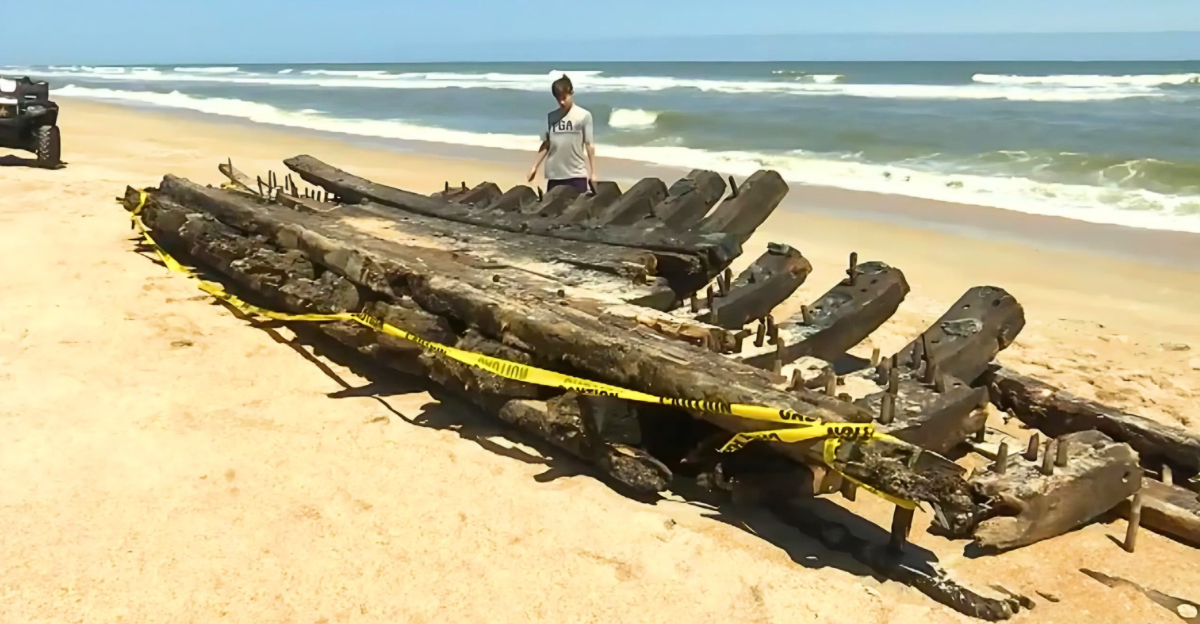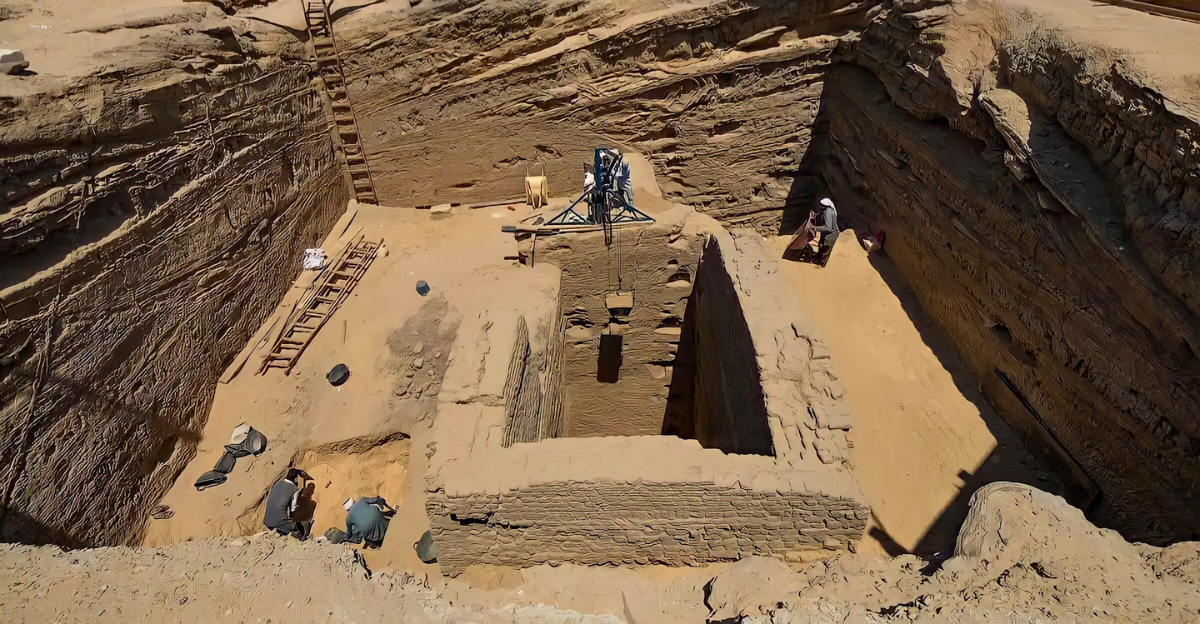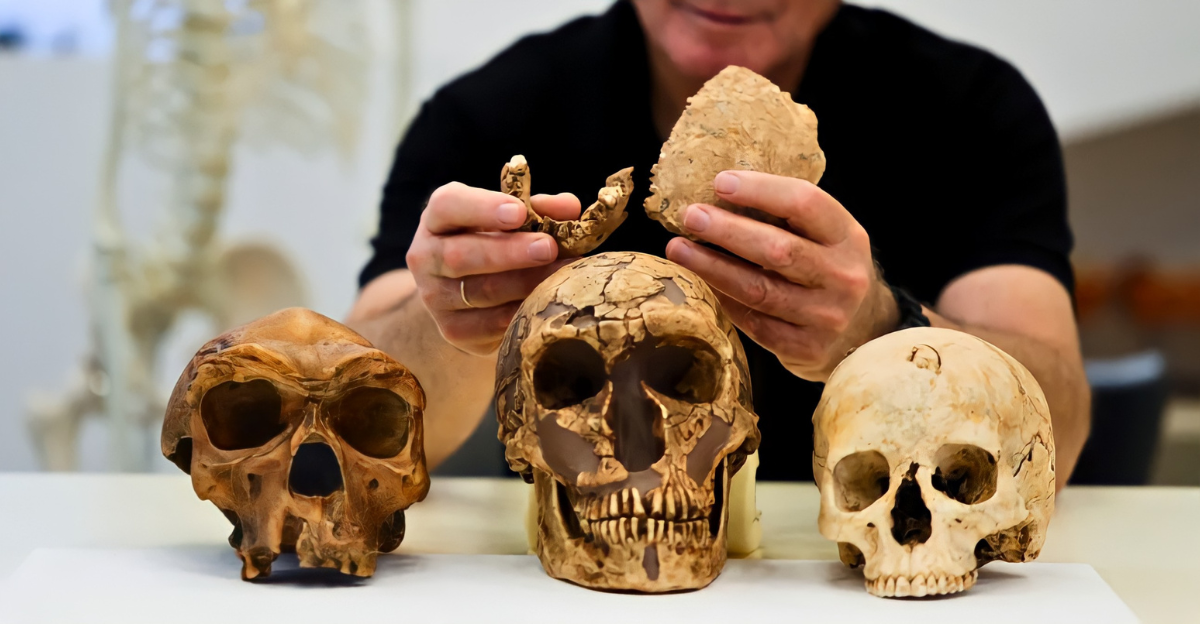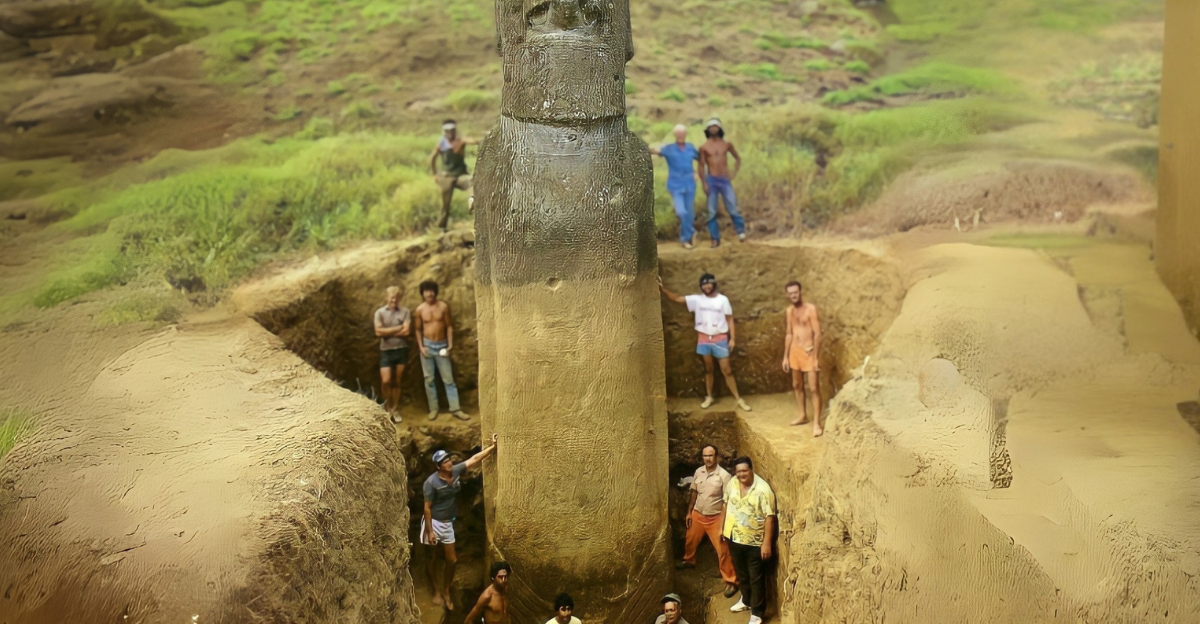
For thousands of years, the stone faces of Easter Island have looked out into the Pacific, their bodies hidden in the ground, fueling rumors and unfettered speculation. Were they toppled by war, swallowed by disaster, or buried by design?
The mystery has been the subject of intense, viral debates on Reddit, TikTok, and YouTube, where every new excavation sends shockwaves through the internet. But for all the speculation, the real reason they were buried remained a mystery—until now.
What if the truth is not as sensational as the myths we whisper to our children but run even deeper than we ever imagined? Now, new evidence has come to light that might change the narrative forever.
Easter Island’s Global Magnetism: Why the World Obsessively Watches
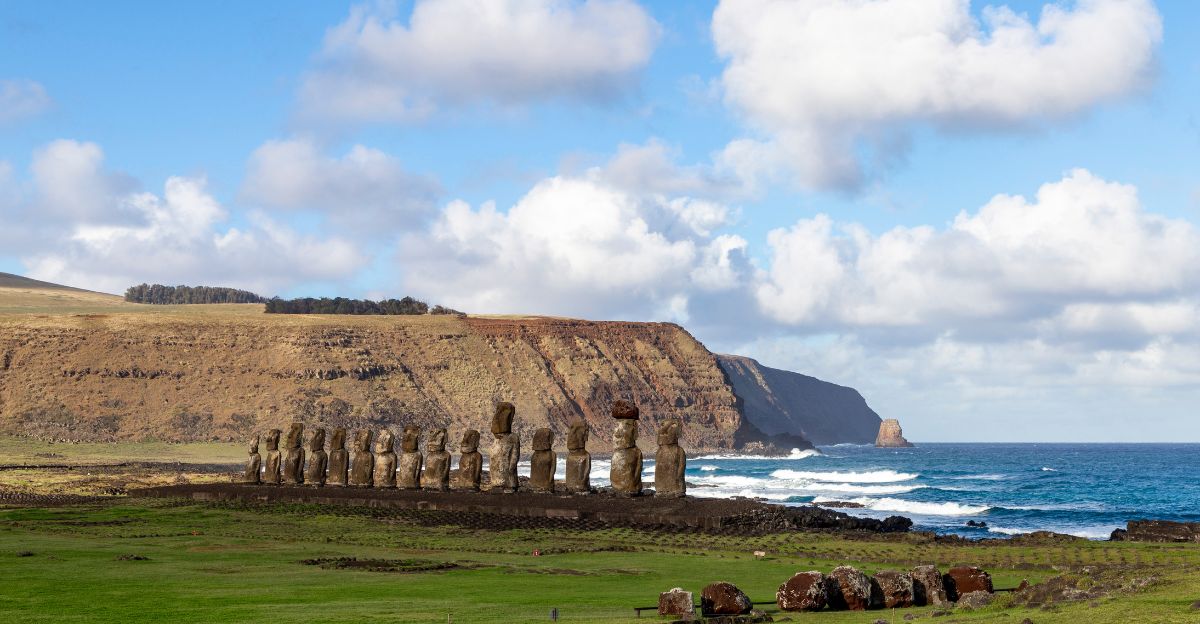
Easter Island, or Rapa Nui, is a remote island in the Pacific; it’s an archaeological hallmark that has fascinated sailors, scientists, and Instagrammers alike.
Its nearly 1,000 moai statues, carved between the 13th and 17th centuries, are now icons of both human ingenuity and mystery. Theories of how and why they were made and what became of them have consumed academic fields, fueled documentaries, and created a tourist economy that welcomes tens of thousands of visitors annually.
The world’s fascination isn’t with the statues alone; it’s with what they may symbolize in terms of survival, decline, and cultural resilience.
Legends, Loss, and the Resilience of the Moai
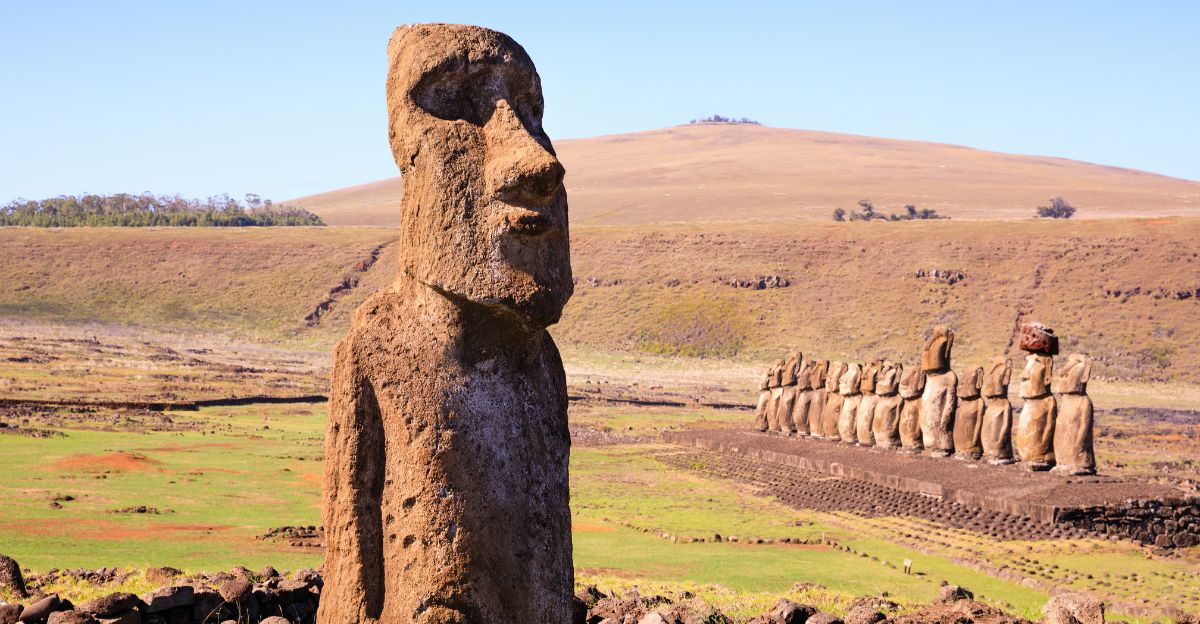
There’s something mystical about the moai—the tall faces, half-hidden, watching over a land that was once green and then nearly vanished entirely.
To the Rapa Nui, they are ancestors, guardians, and spiritual power. To the rest of us, the moai statues evoke feelings of wistfulness, fascination, and even the undeniable pang of loss.
Viral sensations, like the recent discovery of a statue in a lakebed, remind us of how much we still don’t know. Each new find forces us to reconsider our assumptions, feeding wonder and dread: what lies below the surface?
Why Did the Statues Disappear Underground?
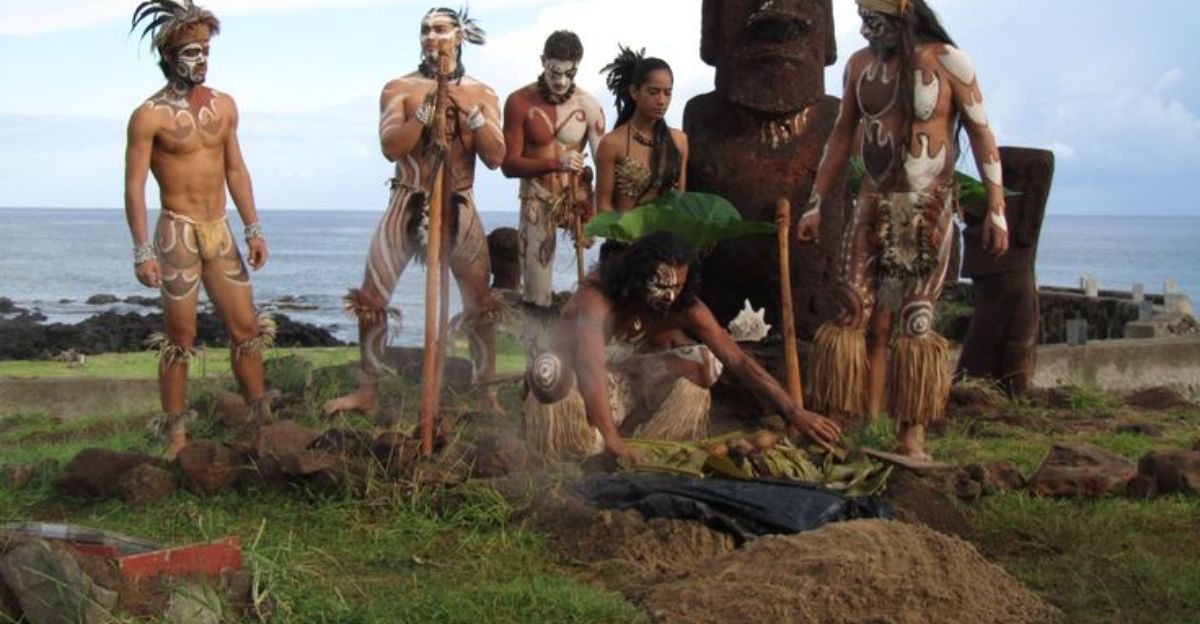
If the moai were meant to remain standing, sentinel even, then why are they buried to their necks, with only their heads visible? Was it burial by design, natural catastrophe, or a sign of neglect?
For decades, archaeological and scientific explanations ranged from clan warfare to ecological collapse. Even bizarre theories of extraterrestrial creatures or walking statues have made the rounds. Archaeologists argued over evidence of erosion, volcanic explosion, and shifting ground.
The stakes: solving the mysterious burial of the moai could reveal what became of a whole civilization, and the cat-and-mouse game between myth and science has never been more intense.
We Finally Know Why the Statues Were Buried
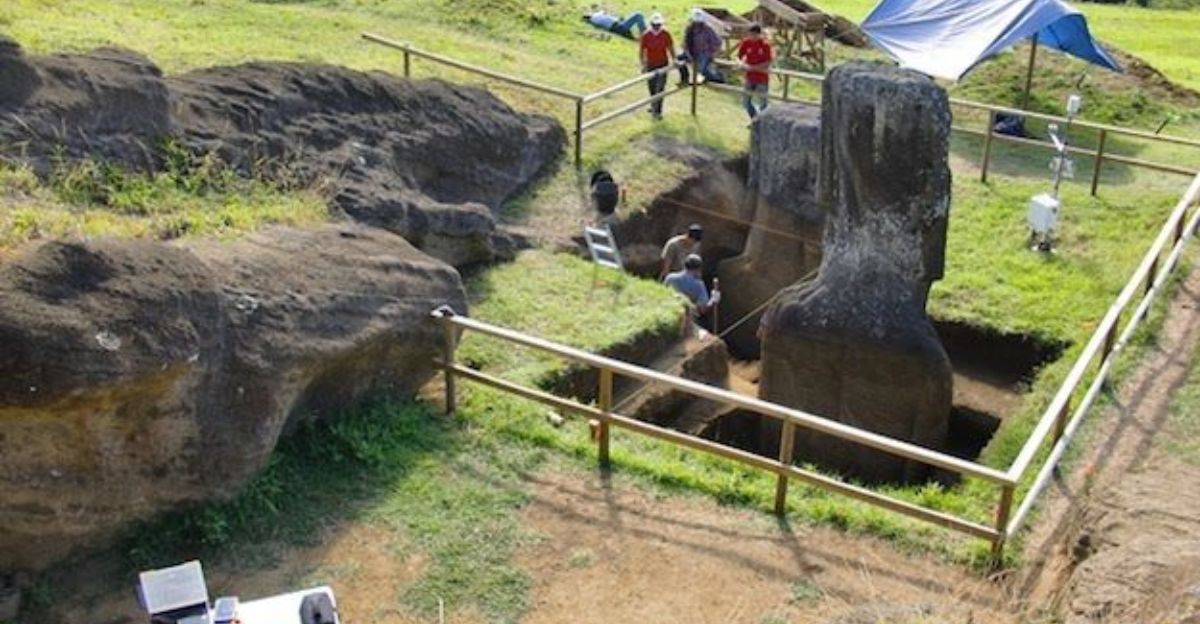
So, what do we now know about the burial of these ancient statues? The moai weren’t intentionally buried by their makers at all.
Instead, centuries of natural forces—erosion, landslides, and sedimentation—gradually enveloped the statues, wrapping their bodies in layers of soil. Recent studies indicate that most of the moai were built close to sources of freshwater, identifying life-sustaining resources for the island’s inhabitants.
As the years went by, rain and wind washed the soil down the volcanic slopes, gradually burying the statues. Far from a sign of defeat or tragedy, their burial highlights the active nature of the island’s landscape and the resilience of its people.
How Did We Crack the Case? Science, Social Media, and Folk Wisdom
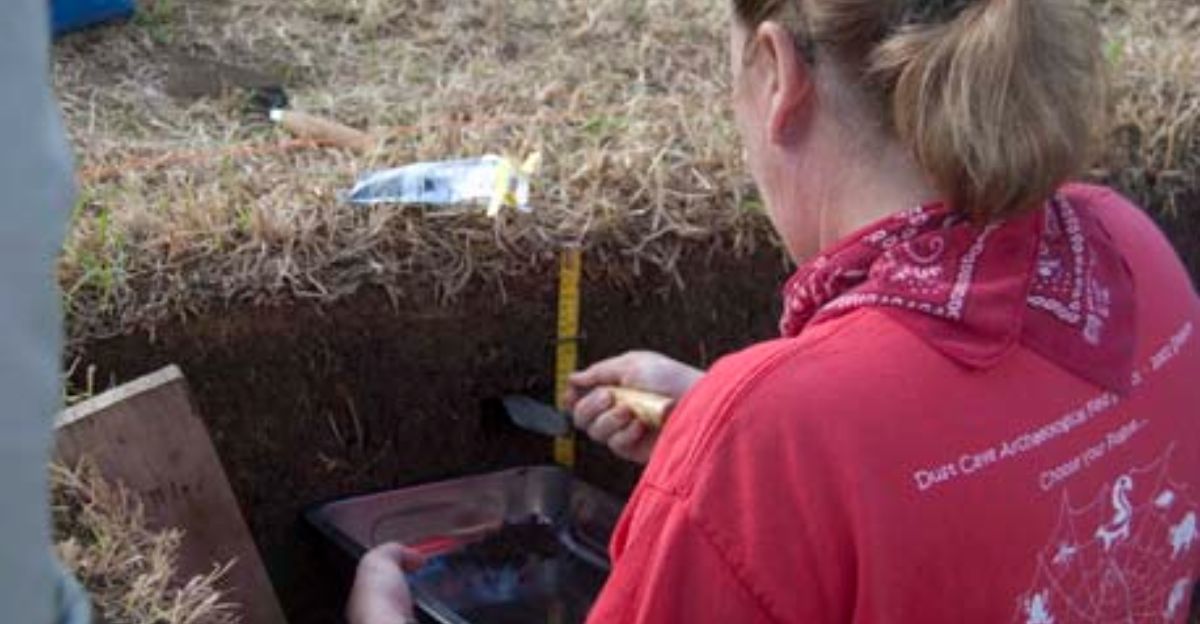
The solution to this mystery was revealed using a combination of low-tech excavation, high-tech science, and global online debate and traditional insight.
University of California, Los Angeles (UCLA) and Binghamton University archaeologists collaborated to apply soil analysis, radiocarbon dating, and spatial mapping to trace the flow of sediment over centuries.
Viral images and videos—found predominantly on Reddit and Instagram—created public interest and even directed experts to new dig sites. Meanwhile, Rapa Nui elders shared their traditional legends and stories with researchers so that they might unite tradition with technology.
Rapa Nui Culture and the Meaning of Burial
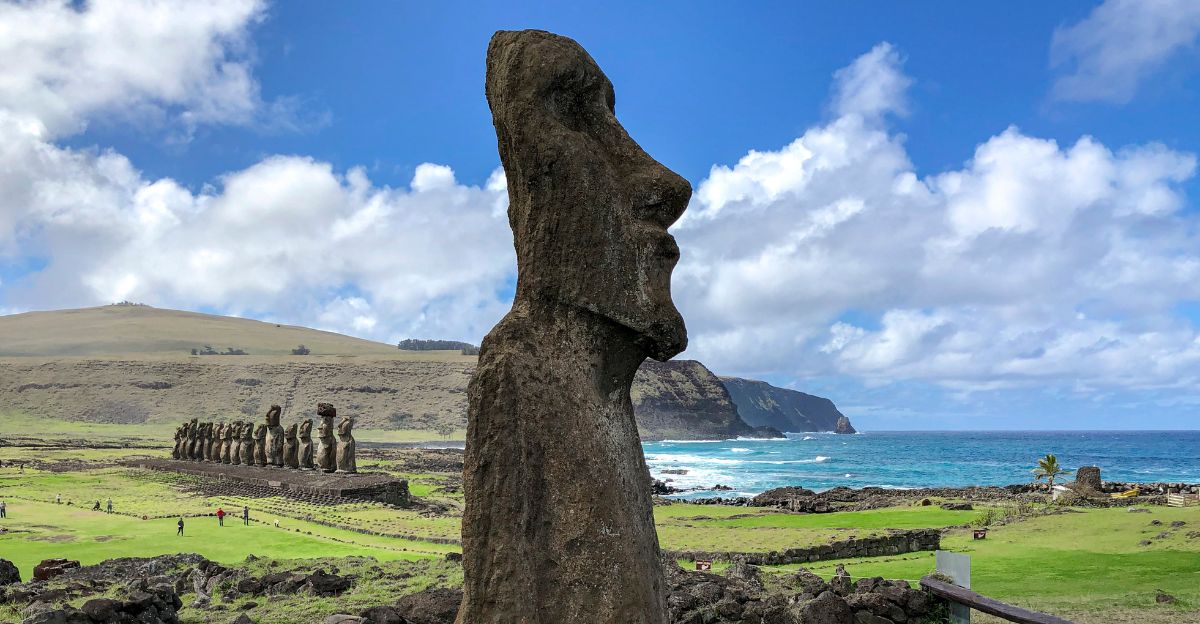
The Rapa Nui never thought of moai as monuments, but as living faces filled with mana, a sacred, supernatural and spiritual power, that sat guarding their descendants and the generations that followed.
The statues’ position near freshwater wasn’t just practical; it was religious, linking the ancestral protection to island survival. The gradual burial of the statues? It became a part of their story: a blending of human endeavor and natural transformation.
Archaeologists see the submerged statues as time capsules, containing carvings and pigments that otherwise would have been lost if they had not been buried. It is a story of adaptation but not one of abandonment.
Decline, Rediscovery, and the Statues’ Lasting Influence
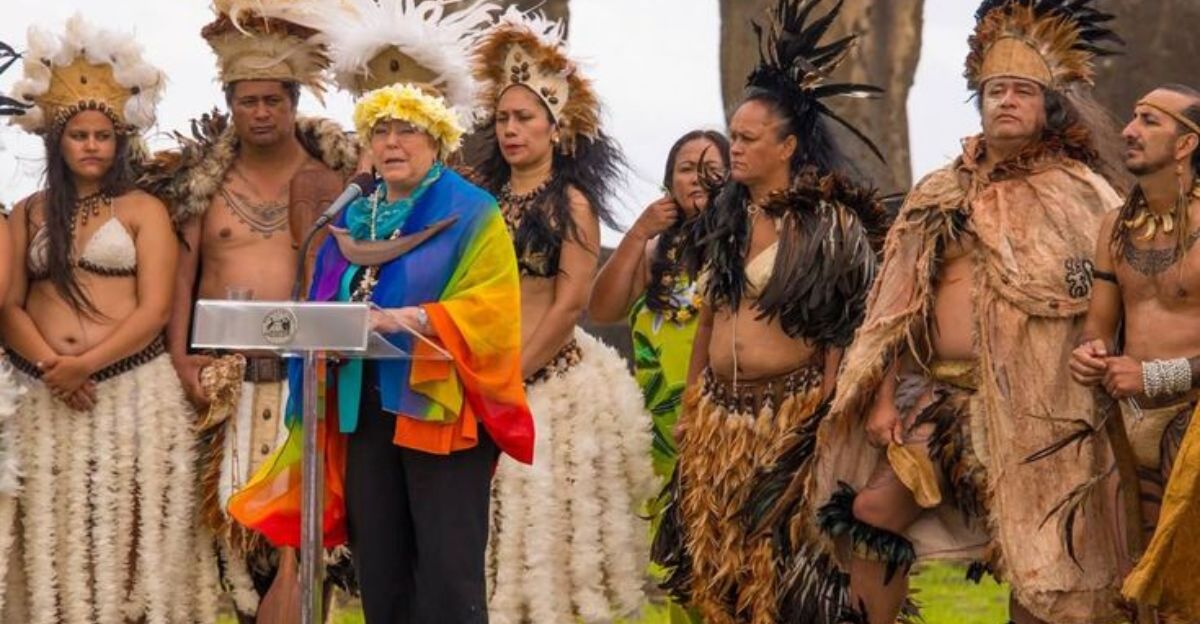
The moai statues’ burial mirrors the path of Rapa Nui itself—a culture that flourished, struggled through shortages, and adapted to changing conditions. With Western contact came disease and disruption.
In time, the statues were abandoned, but their partial burial preserved them from further damage. Today, climate change and tourism threaten the island’s treasures, but each new discovery rekindles island pride as well as fascination and interest on a global scale.
The moai’s endurance, half-hidden, half-exposed, reminds us that history is always more layered than it seems. There is always more than meets the eye.
What’s Next? Uncovering New Mysteries Beneath the Surface
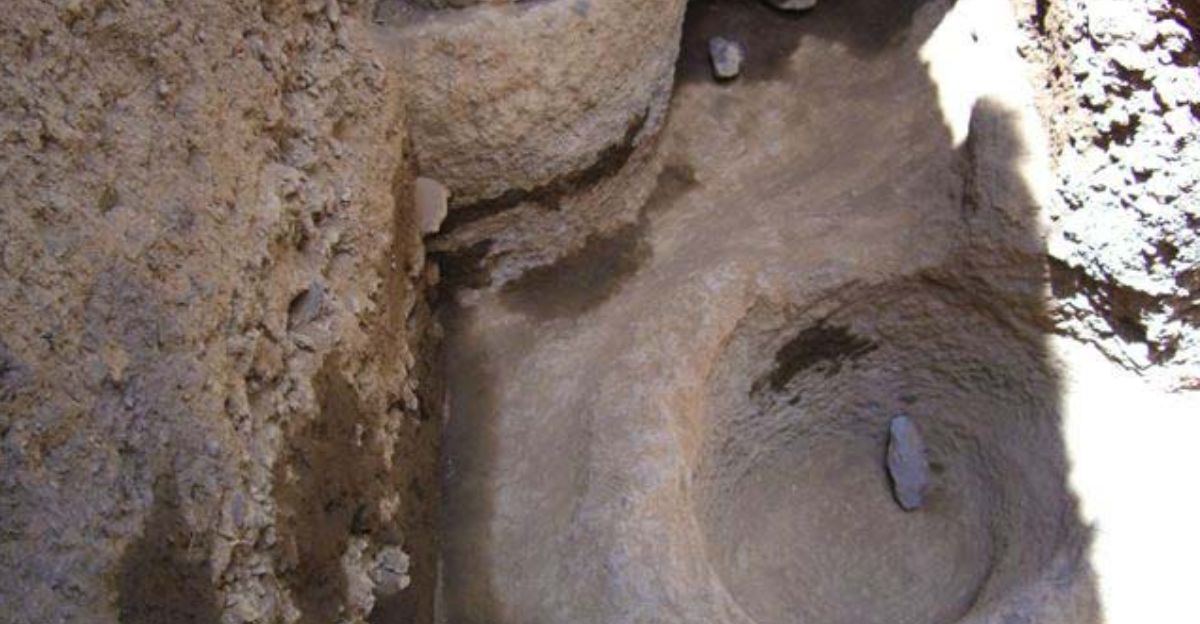
Having learned why the statues were buried, the question on everyone’s mind now is: what else is buried? Every dig reveals not only stone, but tales—petroglyphs, pigments, and even remnants of ancient rituals.
As droughts expose new statues and social media platforms eagerly broadcast every discovery, the world waits with bated breath for the next turn of events. Will emerging technologies, such as ground-penetrating radar redefine everything?
The Rapa Nui island’s tale isn’t finished telling its story; it’s just beginning a new chapter in history.
The Hidden Legacy: What the Moai Can Teach Us About a Changing World
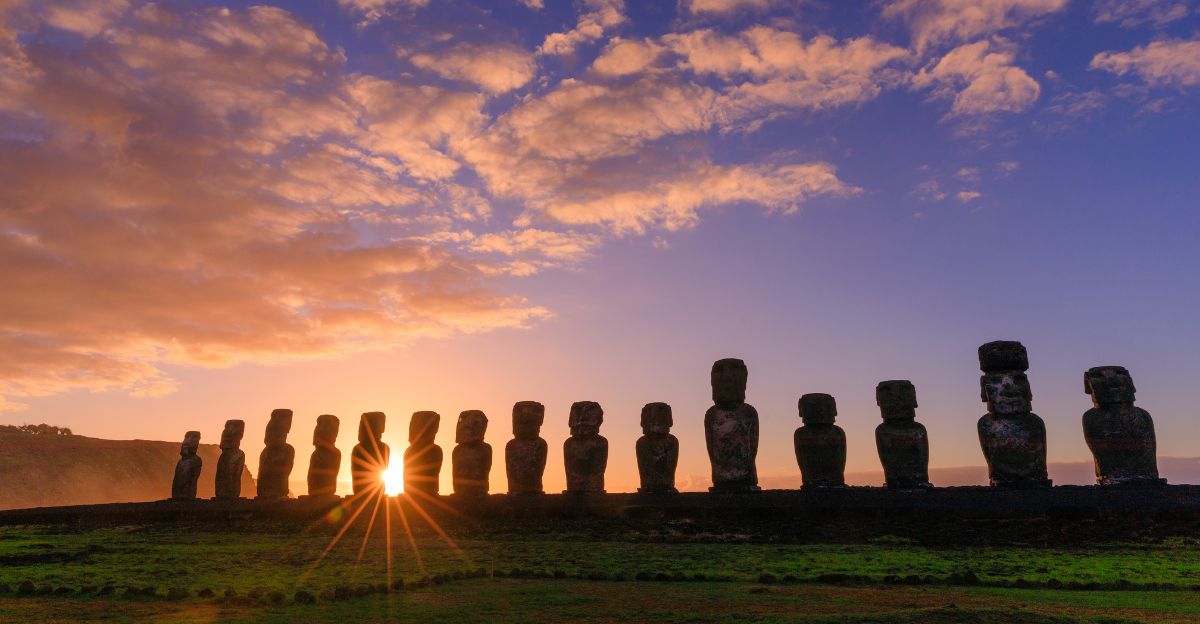
The buried moai, hidden from us for so long, reminds us that history isn’t static, linear or quiet by any means. In fact, the statues have proven that history is forged by nature, culture, and the imperceptible march of time.
Their burial, and preservation as a result, is a symbol of nature’s staying power in the face of doubt. As erosion and climate change threaten the treasures of Rapa Nui Island, the world has to choose how to safeguard not only the statues, but the truths they hold.
The moai’s hidden message? That regardless of how much the world spins around us, ever-changing, the stories we carve into the earth can survive—if we care enough to dig deeper.
Uncover more fascinating moments from history — and hit Follow to keep the stories flowing to your feed!
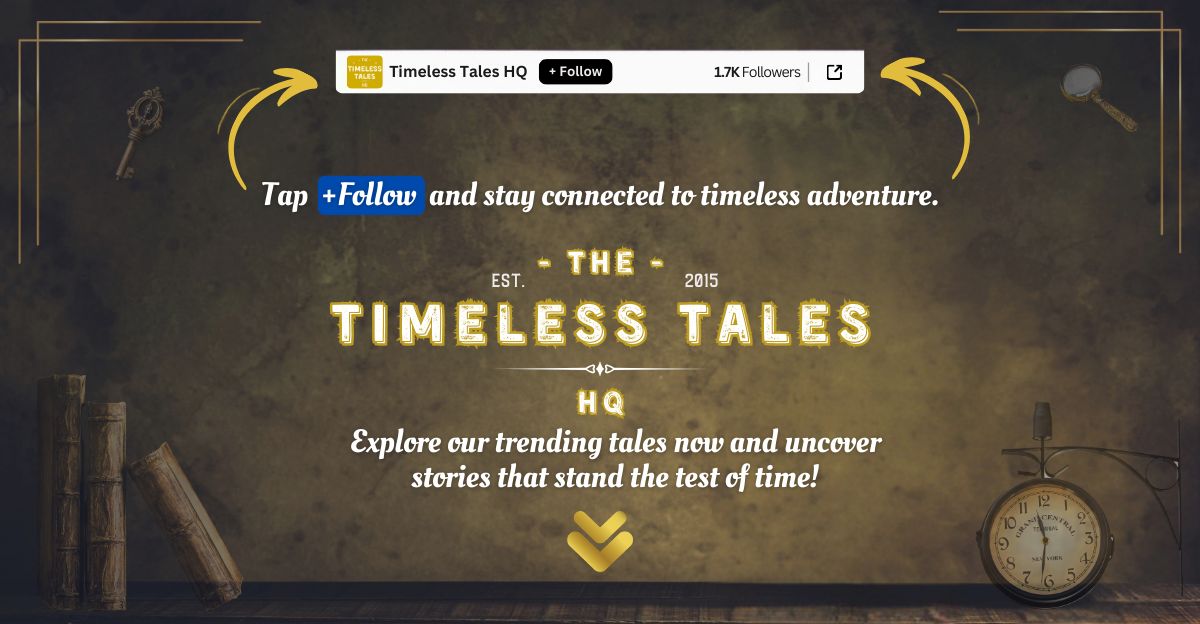
Don’t miss more incredible stories from the past! Tap Follow at the top of this article to stay updated with the latest historical discoveries. Share your thoughts in the comments — we’d love to hear your perspective!

